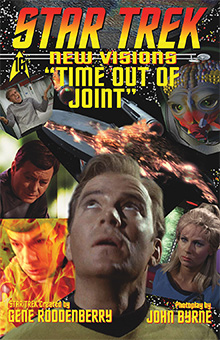There are various striking features of this book that immediately become apparent when you start reading this immensely enjoyable and quintessential Kirk-oriented Star Trek story. They should be easily noticed by any true TOS fan, as what artist/writer — and immensely loyal fan — John Byrne intends.
New Visions #16: Time Out of Joint sees the Enterprise under attack by an unknown assailant. Kirk is in engineering when the attack begins and an exploding console knocks the wind out of him. He makes his way back to the bridge and discovers he has been moved seven minutes back in time.
After a few other jarring leaps into various time periods, he confirms that he has been dislodged in time during the combat which sees him veer throughout various time segments of the battle with the mysterious alien enemies as well as going back to personally significant periods of his own history, that any Kirk fan would immediately appreciate.
During this haphazard veering through time, Kirk manages to maintain his focus of saving the Enterprise and restoring himself back to his own time as if nothing had ever happened.
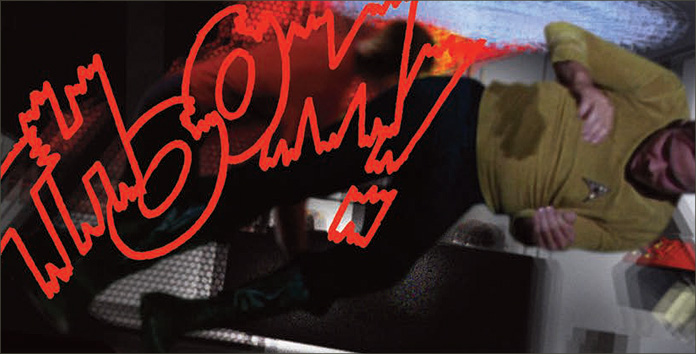
Of course, the fact that this story completely revolves around Captain Kirk is the first thing that a TOS lover would instantly recognize. As a complete Kirk fanboy, I’m completely okay with this. Let’s face it: Kirk was the central character in the Original Series and that accounted for why the captain of a starship headed his own boarding parties and usually dominated the storylines. In the same fashion that Horatio Hornblower was the hero of his own adventures, James T. Kirk was focus in Star Trek… and we all know that Gene Roddenberry was heavily influenced by C.S. Forester’s works.
This not only speaks to Byrne’s immense reverence for this franchise, but also to his expert creativity in writing stories for it. He effectively captures the spirit of the series in the way that Roddenberry would have want these stories told – at least in my opinion. This could have very well been a script from the Original Series in terms of its circular structure, motifs, and its character representation. Not only is the story well contained but it perfectly mirrors the pace and the style of an episode from the 1960’s.
However, you can’t help notice some of the little personal details that Byrne adds into this book that reflect his own style and completely appropriate contributions to the continuation of the Enterprise’s five-year mission. For example, when Kirk encounters eternal fan-crush Janice Rand during one of his temporal jumps, she is now a lieutenant and has returned to the Enterprise after a series of personal adventures that Byrne alludes to in a short story that follows after the main one in this book. It’s completely well-timed but also illustrates his own personal and welcomed touch to the franchise.
I also have to love the three-dimensional, holographic engineering display that was introduced in the last issue. It’s a nice bit of continuity of Byrne’s own original contributions that make this story his but also enhances the enjoyment of reading an Original Series story.
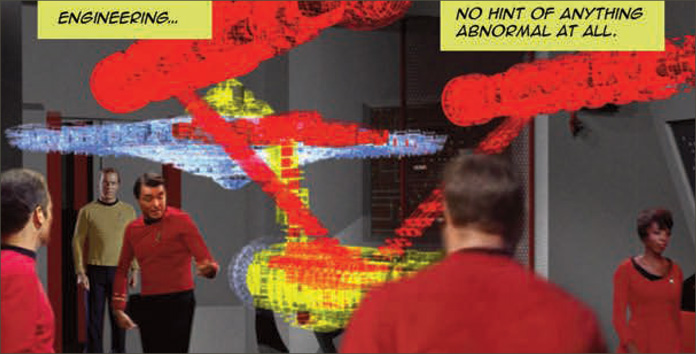
While the alien enemies were somewhat less than intimidating in their appearance, their threat is no less diminished with the scenes of the destruction of the Enterprise, or Kirk bound and tortured under interrogation. Their deadly proficiency with temporal weaponry is the necessary element that prompts Kirk to think about how to save the ship, rather than defeating them.
He puts aside his military need to vanquish his foe and think laterally. Instead of overcoming them with force, he pushes himself through another doorway which he knows will trigger the next temporal jump to another episode in time to hopefully solve the problem. It is a truly unique storytelling model that is entirely Trek.
The storytelling is the real treasure in this book. As much as I’d love to wax philosophically about Byrne’s painstaking ability to source, arrange and, in some cases, create his own generated images, it really is about how closely Byrne has managed to come to emulating the pace and structure of the original episodes. With Kirk’s jumping through different time periods or his attempt to maintain a fixed strategy throughout the entire combat encounter, we see a perfect rendition of Shatner’s performance as Kirk in these pages.
Whether Byrne is directly asking Shatner what he would do in these situations or supernaturally channeling classic Trek directors Joe Pevney or Vincent McEveety is entirely known to him. In any case, he certainly has tapped the vein of these original creators and the work stands for itself.
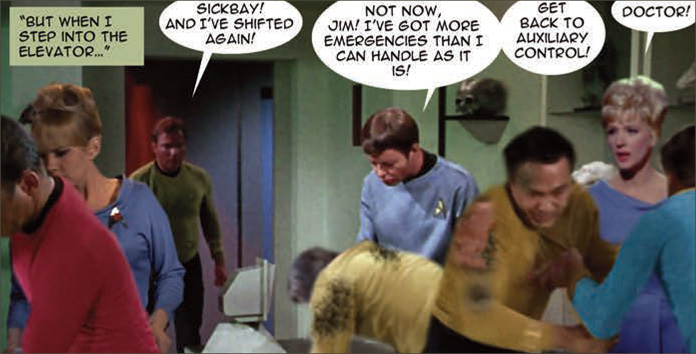
The attention to detail that really stands out in this particular issue. While Byrne is generally meticulous in his treatment of the series in his books, I feel this one really sees him covering all of the Star Trek bases.
From his portrayal of the particular body language depicted by each character delivering particular dialogue to the choice of significant elements from Kirk’s past that would evoke a certain emotional response from fans (ie: his long-time love, Janet or his hated academy nemesis, Finnegan), Byrne has targeted parts of Kirk’s past that relate not just to his own history but to aspects that are historically essential to the fabric of the show. These things matter, if not from just a story-telling perspective but also from an appreciative one.
But the subsequent stories that follow after the main one are also of significance. Byrne shows his versatility in storytelling with the fact that he has more in the hopper than we realize. I want to be a fly on the wall of this man’s studio to see how he arranges his work schedule. How can he can find the time to not only script stories, find the relevant photos for them, arrange them in structure yet also have stories on the go that he has also done the same amount of work for in advance?
This book has three stories in it, which is brilliantly creative but also speaks to Byrne’s level of superior organizational skills. It’s staggering when you try to appreciate the amount of administrative work that must go into the production of this book, which is pretty much a one-man show.
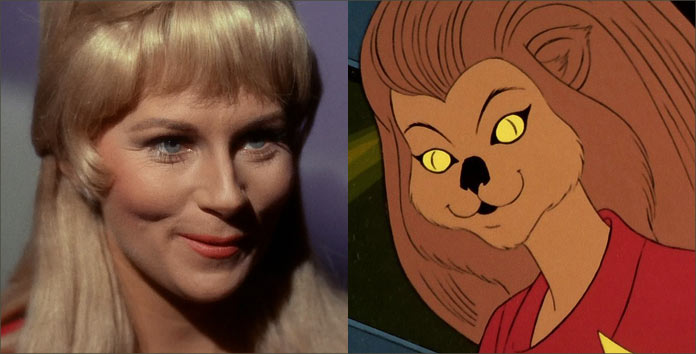
- Home is a short story that sees the return of Yeoman, now Lieutenant Janice Rand. While Byrne alludes that she has ended a marriage that went wrong and is returned to the Enterprise, it teases at a future story that will certainly be welcomed by lovers of this franchise – and of Grace Lee Whitney’s eternally memorable character.
- Those Who Play with Cats also hints at a possible, playful story between the always-on-the-prowl Hikaru Sulu and his newest romantic target, relief communications officer Lieutenant M’Ress. Those fans of the short-lived animated Star Trek will remember the Caitian officer, voiced by Majel Barrett-Roddenberry. This, alone, really shows us the depth of Byrne’s respect for the series.
The Animated Series has generally been accepted to cover the last two years of the Enterprise’s five-year mission exploring deep space, Byrne brings back one of the characters from that time as part of his own continuation of the series. It not only adds a degree of authenticity to his work but also an acknowledgement of the continuity of the show’s history.
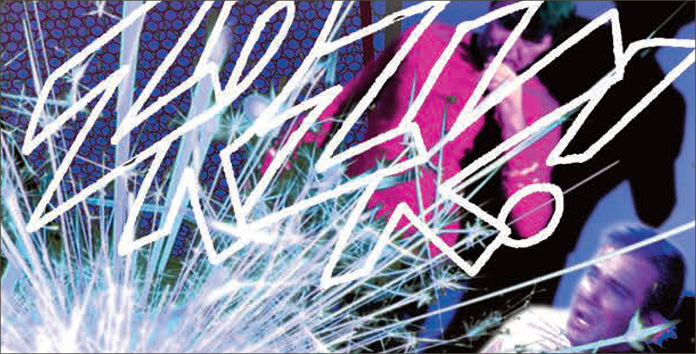
Byrne really deserves the accolades for this issue. Not only has he shown us a story that TOS fans can really get behind through his careful and reverential inclusion of the elements that could make this book an original series episode, but he also demonstrates that he has more to offer. This is a book meant for TOS fans and we have to remember, despite its 1960’s origins, this was the source of all Trek.
John Byrne has not only made New Visions #16: Time Out of Joint true to the time period but also includes some of his own personal touches. It’s not just an original comic that Byrne is making but also a series of scripts that could have very well been a part of the original show. All that seems to be missing is a time machine to take these stories back and see if they’d get script approval.
Maybe there’s story there, Mr. Byrne?

